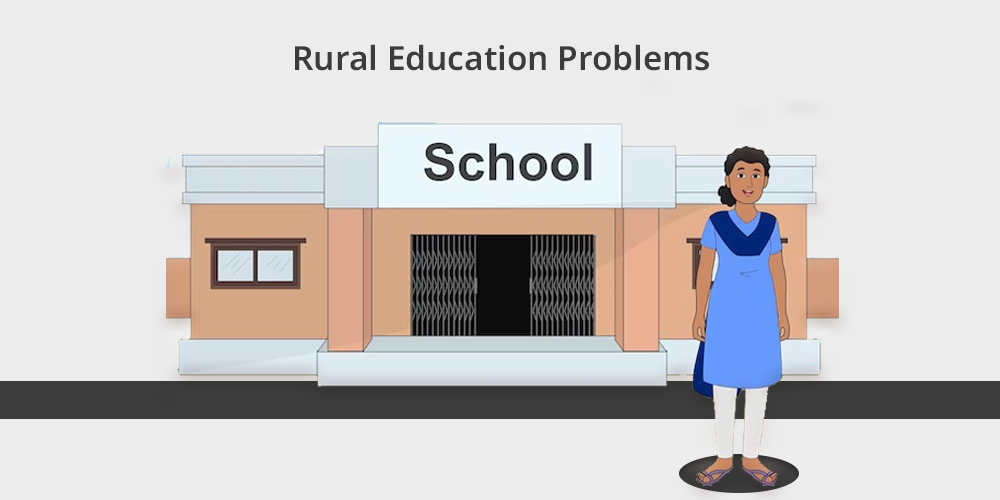
Have you ever thought about what schools look like in remote or rural areas? The development of a child starts from school.
But school is not all about blackboard, chalk, classroom, books and benches. Sometimes education becomes a challenging task especially in rural areas.
Education in rural areas comes with a lot of challenges. From walking miles to just reaching a classroom, reading from a torn book or sitting without benches.
While several learners are harnessing the advantages of online learning, rural students are still away from basic learning benefits.
Education is a basic right of every child, no matter whether they are from rural or urban areas.
In this blog we will identify the key problems and solutions of rural education. Let’s dive to understand why fixing this gap is crucial.
Contents
- What is Rural Education?
- Key Problems in Rural Education in Rural Areas
- Practical Solutions to Improve Rural Education
- Government Initiatives and Opportunity in Rural Education
- Role of NGOs and Private Sector in Rural Education
- The Future of Rural Education in Children Development
- Conclusion: Brighter Future For Every Child
What is Rural Education?
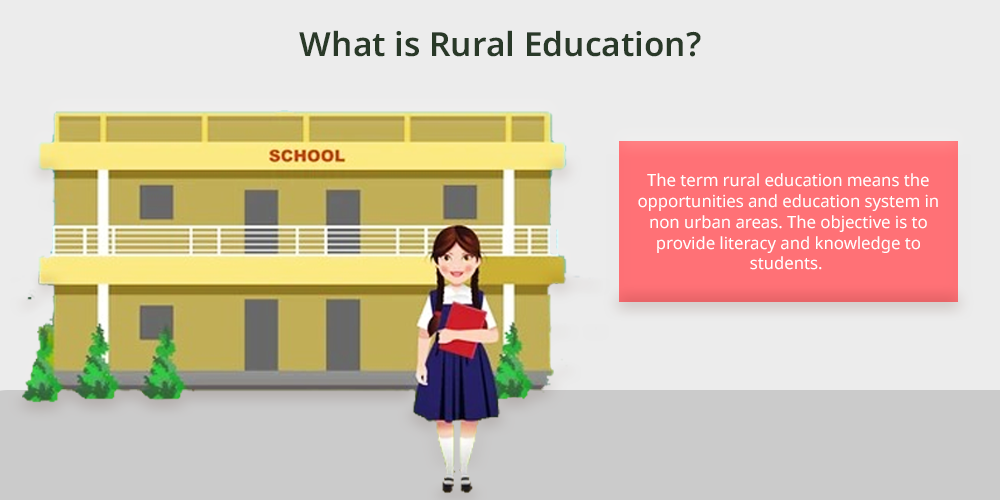
The term rural education means the opportunities and education system in non urban areas. The objective is to provide literacy and knowledge to students.
Rural area education often struggles due to inadequate infrastructure, shortage of teachers, social emotional learning barriers and lack of resources.
Rural education is important for skill development, uplifting the society and maintaining the equality between both rural and urban class.
To know more why school education is essential for kids read the importance of skill development in school education.
Key Problems in Rural Education in Rural Areas
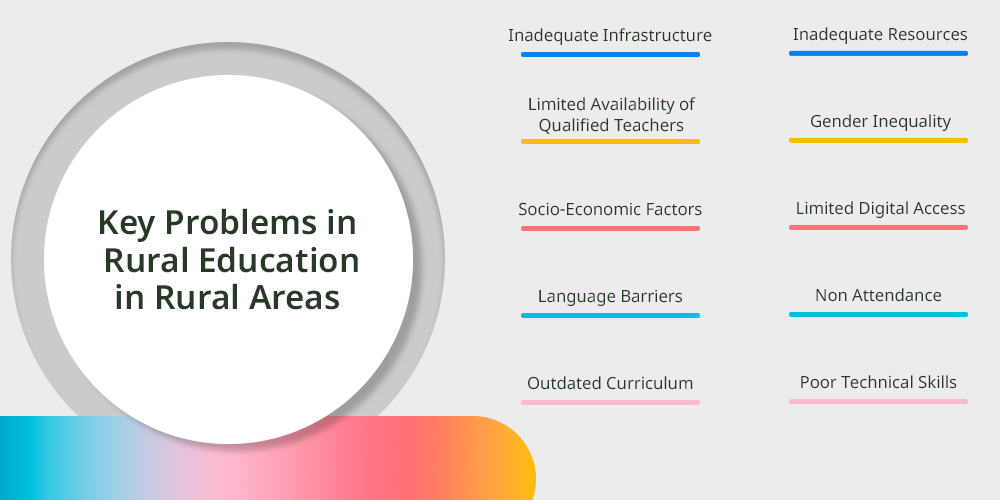
Rural education faces a lot of challenges and problems which impact the learning of kids. From inadequate infrastructure to limited digital tools.
Each problem hinders the growth and success of young minds who want to conquer the world with innovation.
Some of the major problems faced by rural students are:
1. Inadequate Infrastructure
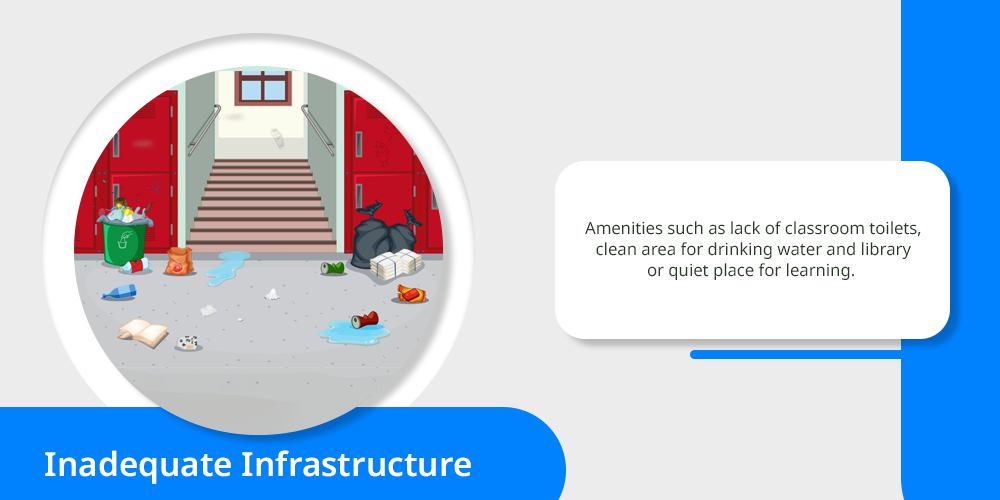
In rural education inadequate infrastructure is one of the common problems. There are many schools that don’t have amenities.
Amenities such as lack of classroom toilets, clean area for drinking water and library or quiet place for learning.
2. Limited Availability of Qualified Teachers
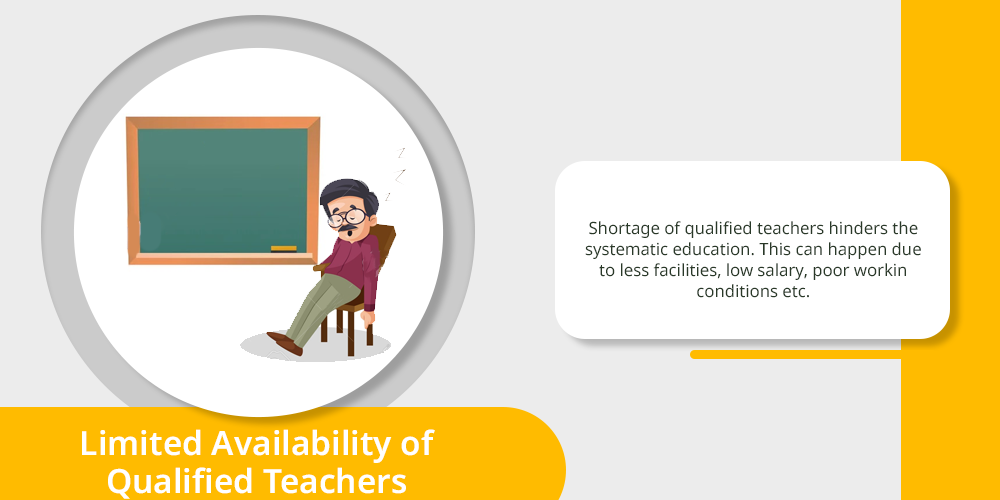
Shortage of qualified teachers hinders the systematic education. This can happen due to less facilities, low salary, poor working conditions etc.
This difference in student teacher ratio reduces the quality of education in rural areas.
When it comes to having qualified teachers, you may wish to read the blog on must have skills for online school teachers.
3. Socio-Economic Factors
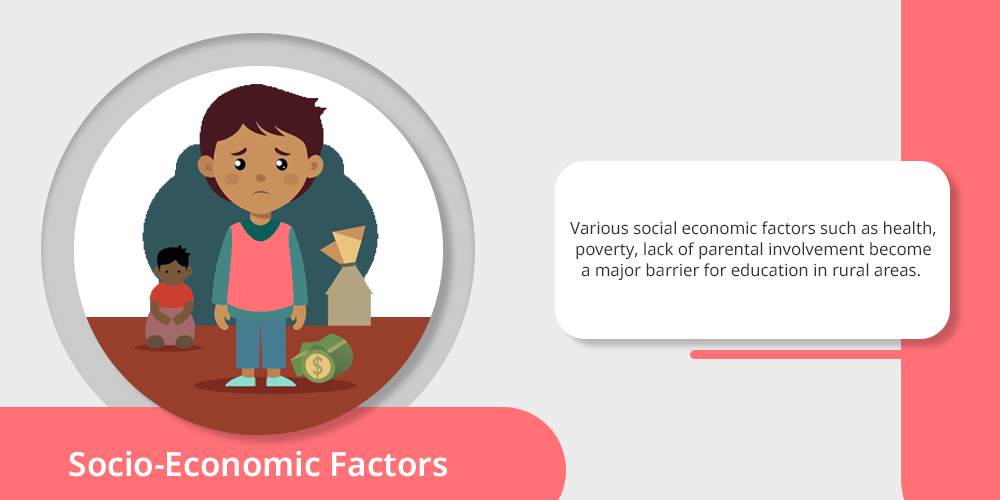
Various social economic factors such as health, poverty, lack of parental involvement become a major barrier for education in rural areas.
4. Language Barriers
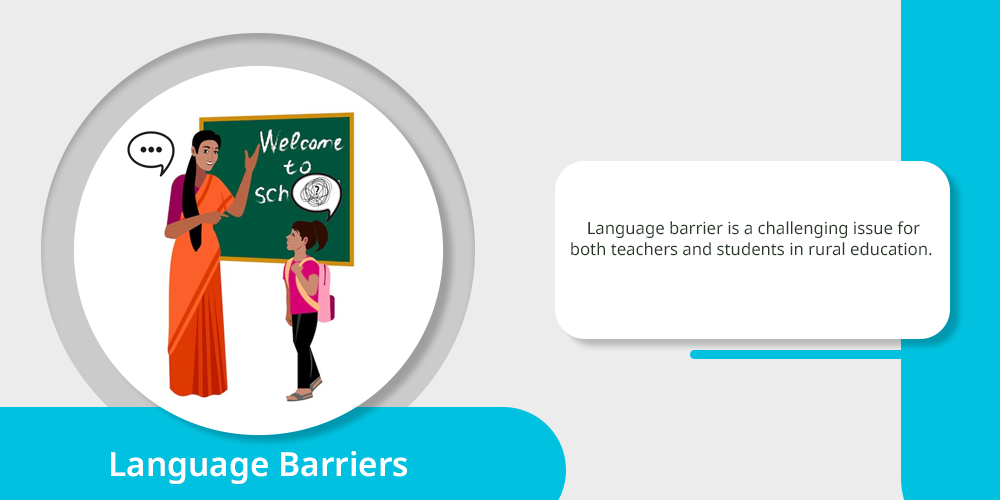
Language barrier is a challenging issue for both teachers and students in rural education. It can reduce the interest and engagement in the classroom.
To overcome the language barrier, read the benefits of learning second language.
5. Outdated Curriculum
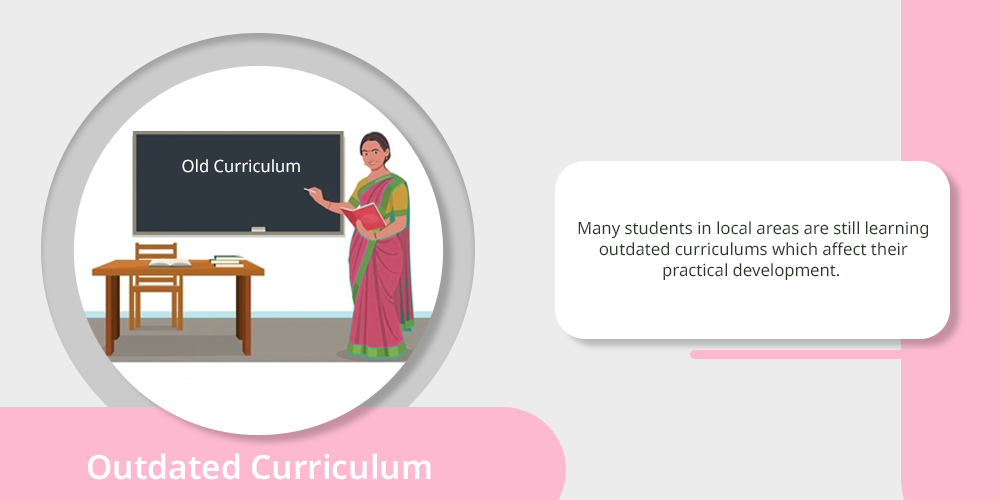
Many students in local areas are still learning outdated curriculums which affect their practical development.
It further hinders vocational skills required for employment. Read more on vocational education here.
6. Inadequate Resources

Inadequate resources refers to low quality environment and education for rural students.
The key problem includes lack of funding and shortage of educated faculty.
7. Gender Inequality
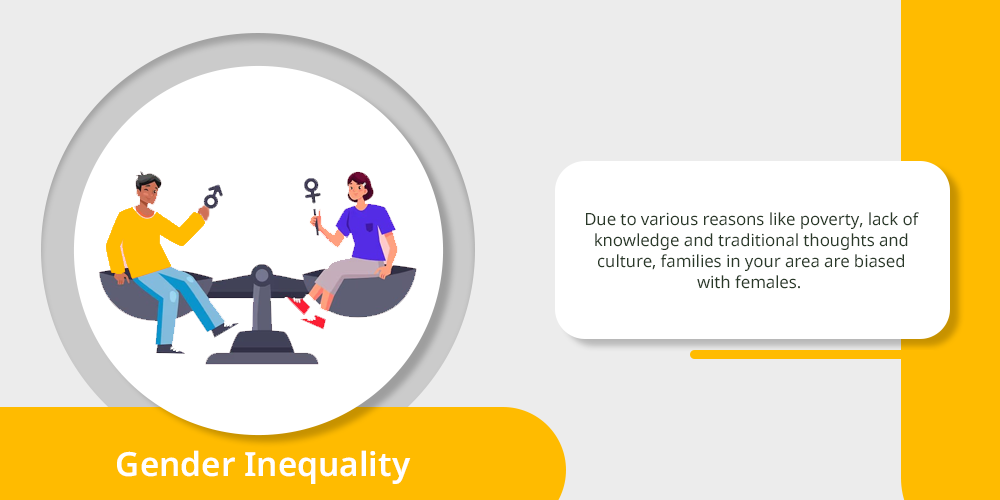
Gender inequality is one of the challenges in rural education in which female enrolments are very less as compared to male.
Due to various reasons like poverty, lack of knowledge and traditional thoughts and culture, families in your area are biased with females.
8. Limited Digital Access
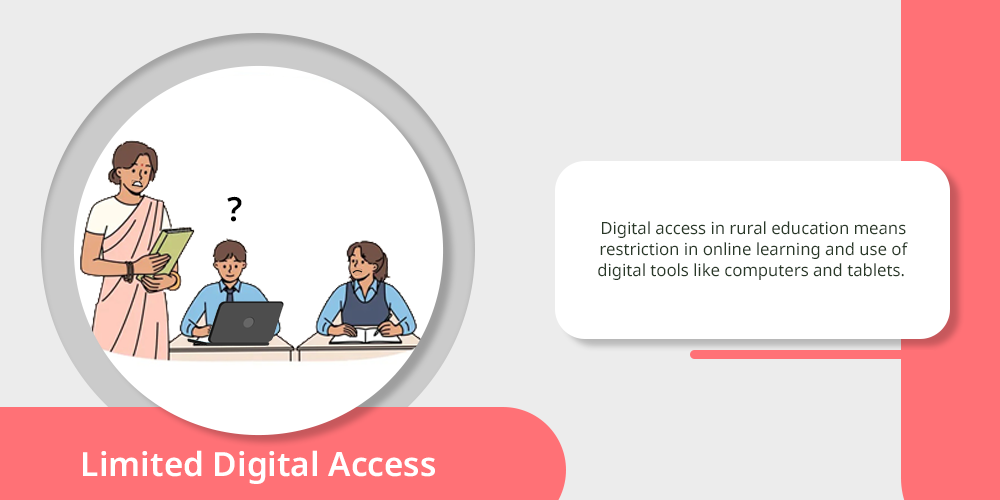
Digital access in rural education means restriction in online learning and use of digital tools like computers and tablets.
This will not only affect students’ education but also make them less qualified for the interview.
9. Non Attendance
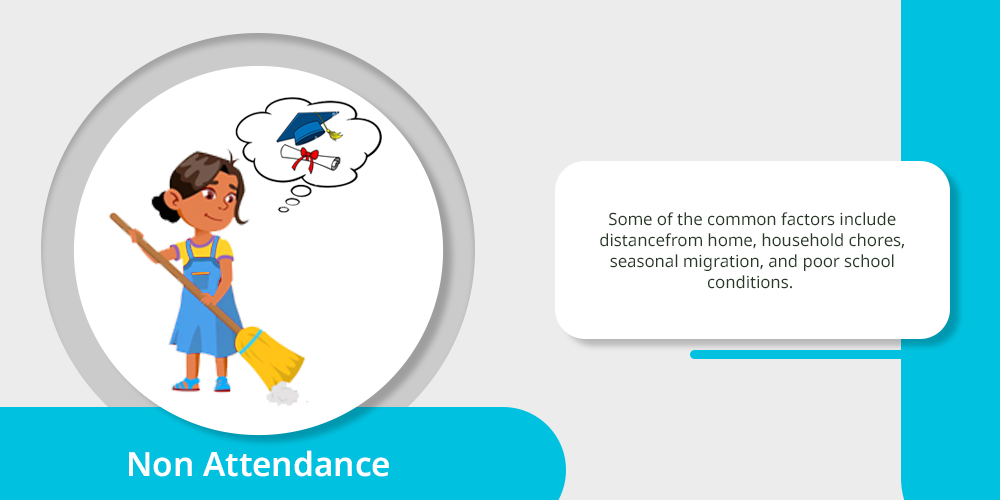
Non attendance is a constant issue in rural area schools. Some of the common factors include distance from home, household chores, seasonal migration, and poor school conditions.
Regular attendance can handle the education and learning engagement of students.
10. Poor Technical Skills
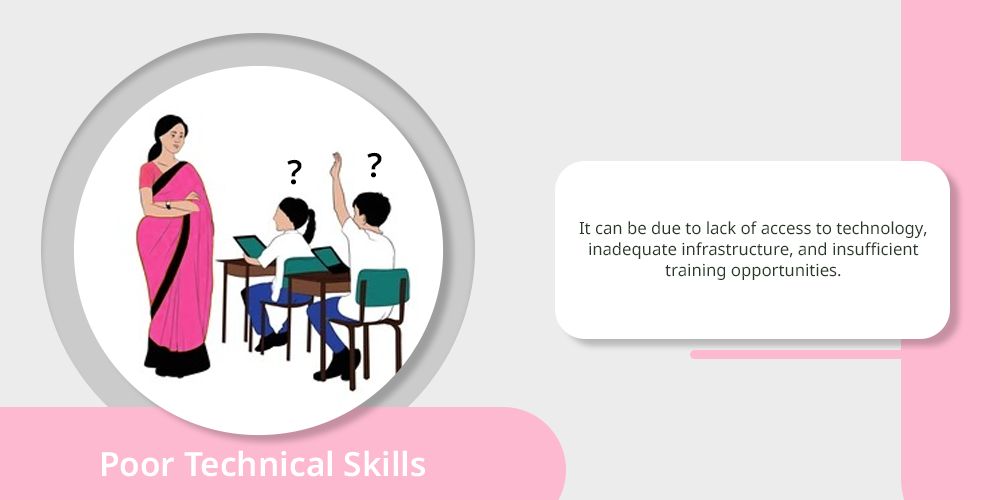
The improper technical skills are a major issue in rural education. It can be due to lack of access to technology, inadequate infrastructure, and insufficient training opportunities.
So, the requirement of the basic technical skills remain uncatered leading to a strong loophole in learner’s development. Read more on the role of technology in education here.
Practical Solutions to Improve Rural Education
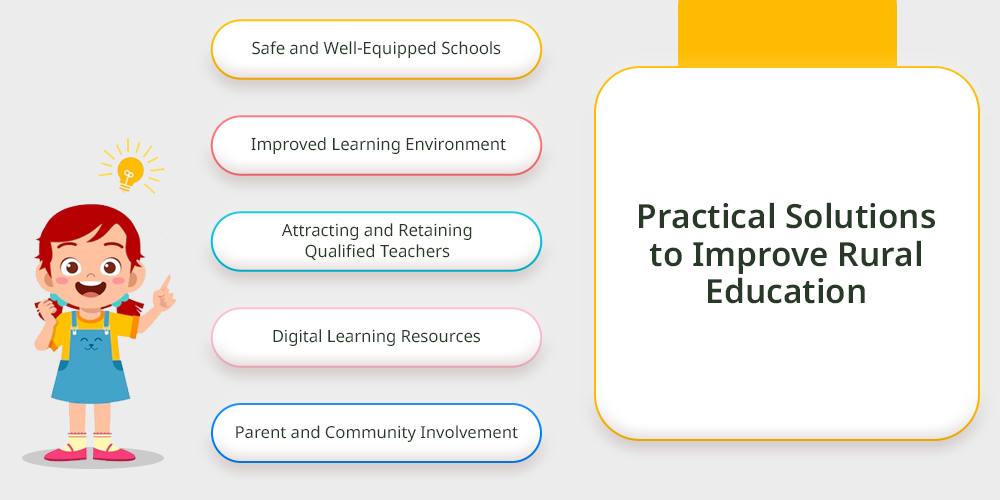
Improvement in rural education can be a challenging task but not impossible. The right coordination between parents, teachers and students make this happen.
It’s time to focus on each rural education problem and focus on solutions and make students education easy.
Practical solutions to improve rural education:
1. Safe and Well-Equipped Schools
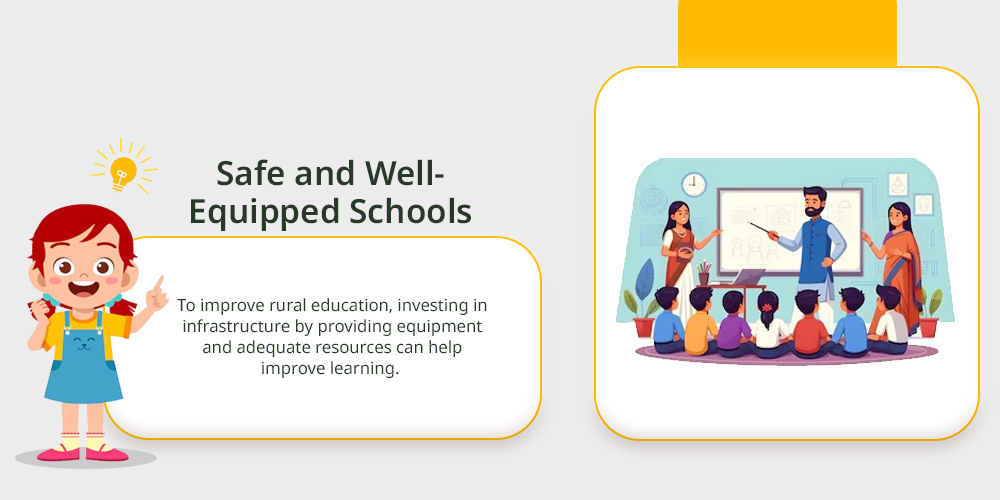
To improve rural education, investing in infrastructure by providing equipment and adequate resources can help improve learning.
Infrastructure is not only for physical comfortability but also provides an environment for mental health development of students.
2. Improved Learning Environment
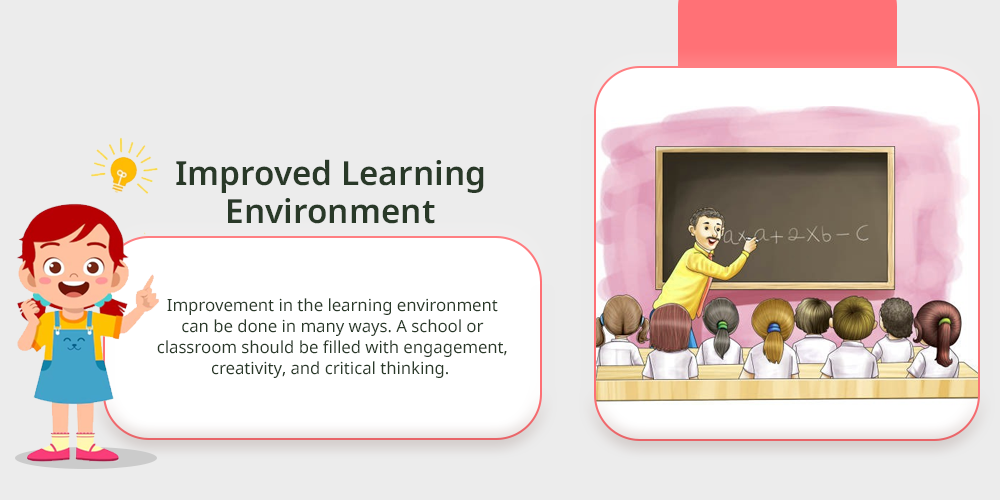
Improvement in the learning environment can be done in many ways. A school or classroom should be filled with engagement, creativity, and critical thinking.
Teachers need to introduce activity-based learning, vocational education, and co-curricular programs which make rural education more relevant and enjoyable.
To improve children’s learning abilities read why creativity is important to child development.
3. Attracting and Retaining Qualified Teachers
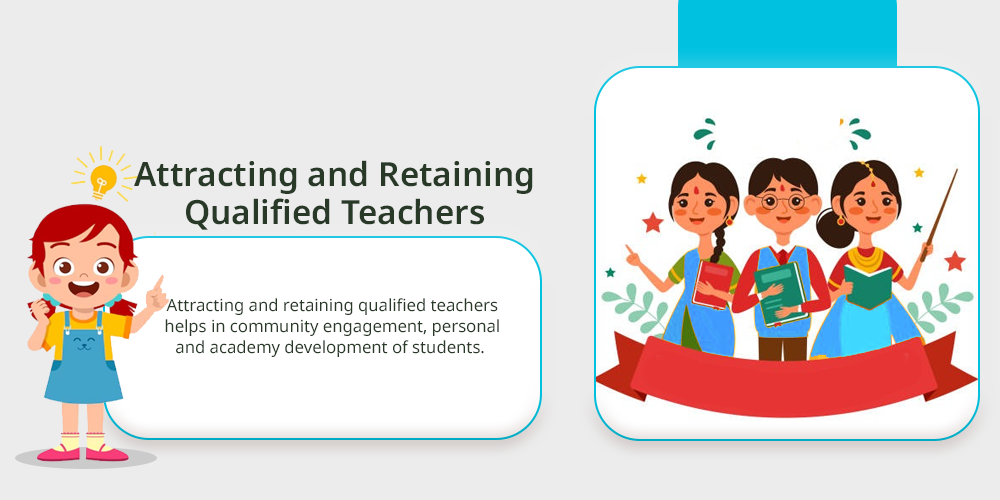
Attracting and retaining qualified teachers helps in community engagement, personal and academy development of students.
By providing competitive salary and additional benefits, implementing the latest education curriculum guides students in the right direction.
4. Digital Learning Resources
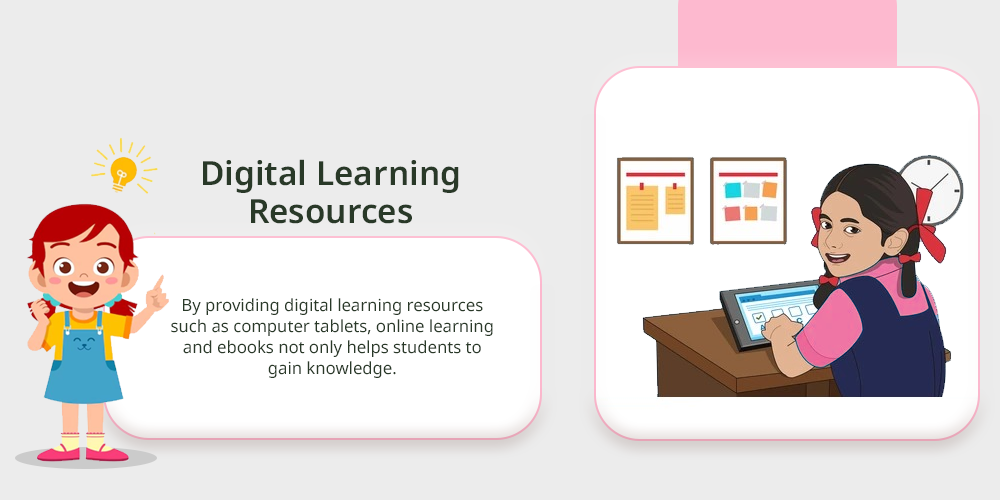
By providing digital learning resources such as computer tablets, online learning and ebooks not only helps students to gain knowledge from their home but also manage finding.
To make remote areas accessible, partner with NGO or ed-tech companies to provide funds under corporate social responsibility.
5. Parent and Community Involvement
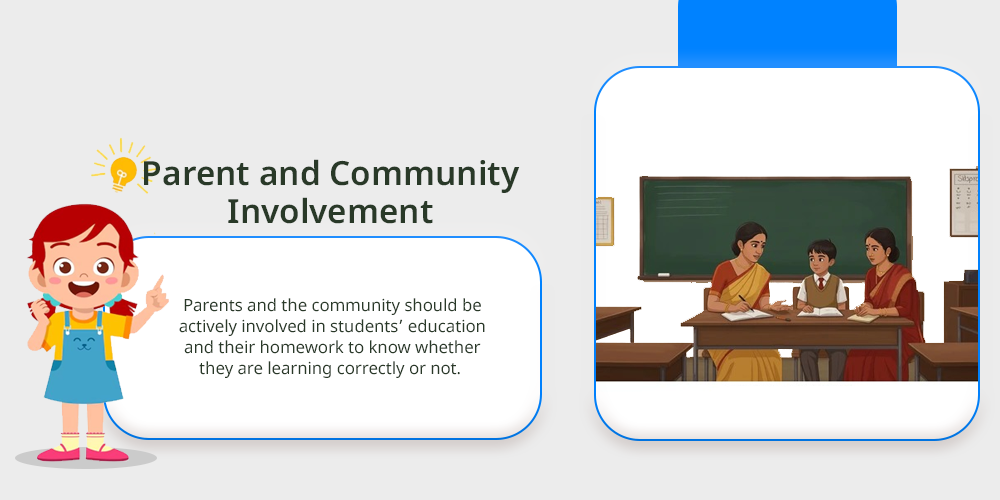
Parents and the community should be actively involved in students’ education and their homework to know whether they are learning correctly or not.
Parents’ participation in school activities help rural education schools to overcome financial barriers.
Government Initiatives and Opportunity in Rural Education
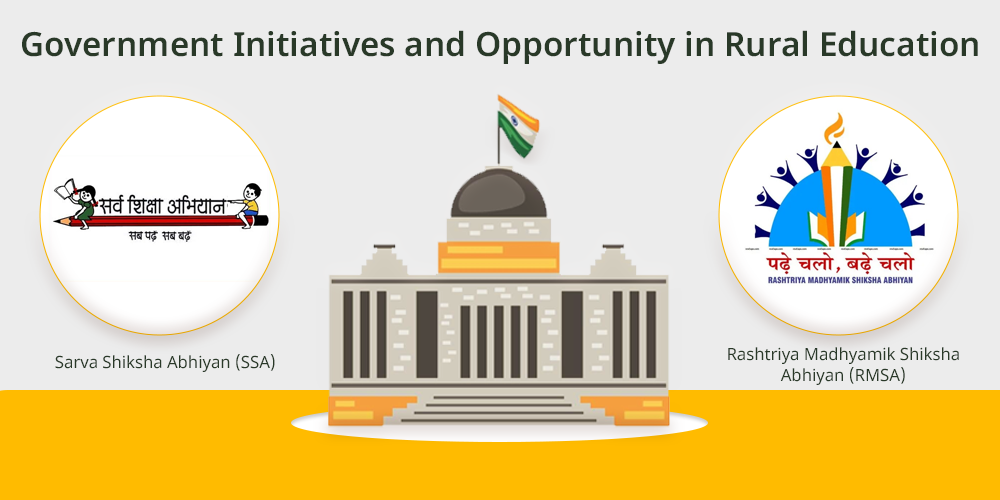
The Indian government initiatives are designed to promote rural education and give a good and desired future to students.
Rural education program focuses on increasing access to education, improving quality, and retaining students, particularly in underserved areas.
- Sarva Shiksha Abhiyan (SSA): It was launched in 2001 and aims to universalize elementary education across the country.
- Rashtriya Madhyamik Shiksha Abhiyan (RMSA): RMSA is a government initiative introduced in 2009 to enhance access to secondary education and improve its quality. Its major focus is on rural school education.
Role of NGOs and Private Sector in Rural Education
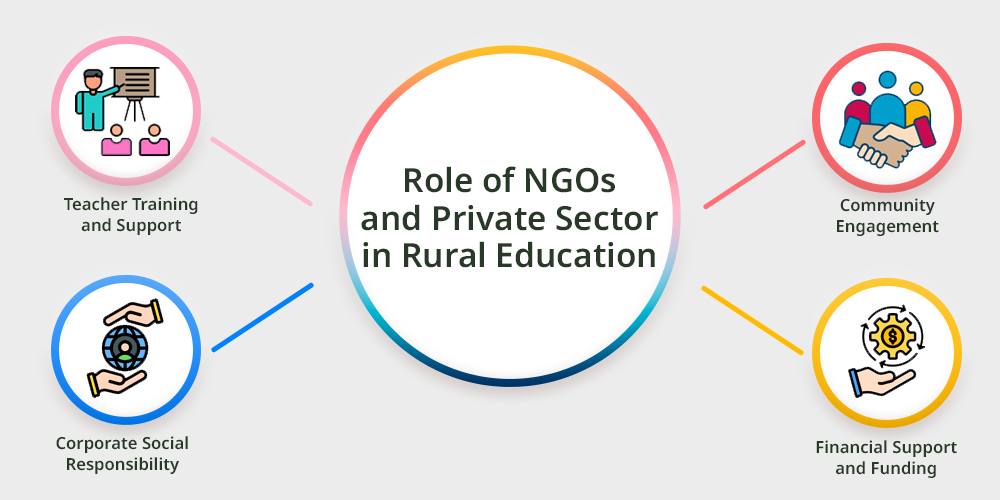
NGOs and the private sector play a crucial role in uplifting rural education. It directly supplements government efforts towards rural education.
NGOs and the private sector not only identifies the students’ needs but also fills the gap in assessing resources.
Some common examples of rural education:
- Teacher Training and Support: NGO or private sector companies under CSR provide teachers training and support to improve the quality of areas.
By addressing challenges such as teachers shortage, less educated faculty or lack of latest knowledge, organizations come up with solutions. - Community Engagement: For community engagement various organisations connect with community and work from the root to build trust and awareness for the importance of education.
This will have organisations to understand the requirements and correct way to contribute under CSR initiatives. - Corporate Social Responsibility: With the help of Corporate Social Responsibility
rural education problems can be determined easily. Not only this, these can be effectively managed to get innovative solutions.
- Financial Support and Funding: Financial funding and supporting rural education fills the small gaps missed by the government to provide quality education.
The Future of Rural Education in Children Development
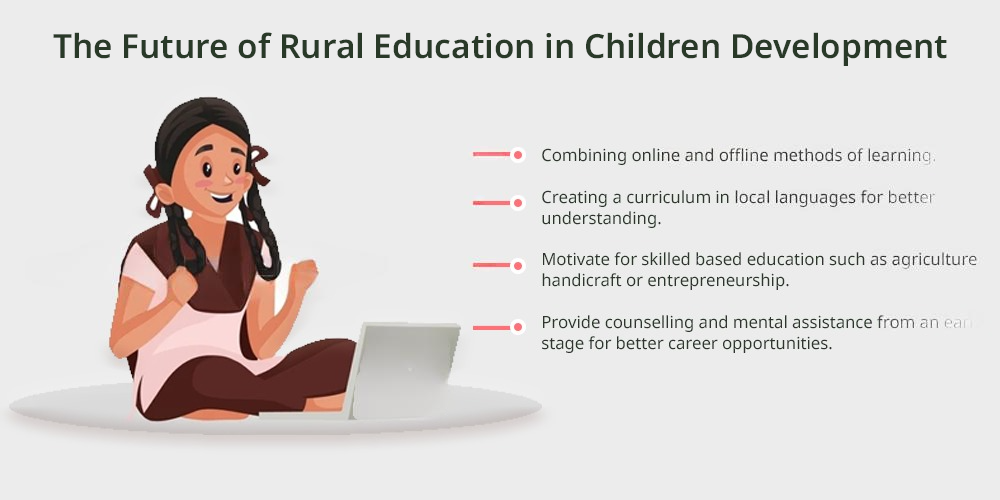
The future of rural education lies in inclusive and high-quality learning environments in which children can freely learn.
It fosters participation of NGOs and the private sector and partnership with government and local community rural education to empower future generations.
Key trends shaping the future of rural education:
- Combining online and offline methods of learning.
- Creating a curriculum in local languages for better understanding. Read the importance of language skills.
- Motivate for skilled based education such as agriculture handicraft or entrepreneurship.
- Provide counselling and mental assistance from an early stage for better career opportunities.
Education in rural areas is not only beneficial for students’ future growth and opportunities but also an ideal choice for parents and community towards better lifestyle.
To know more about the connection between technology and education, read how technology can support students success.
Conclusion: Brighter Future For Every Child
Rural education is challenging but together we can make things possible. It demands togetherness of government, NGOs, private sectors and local community.
By addressing the root cause from development of infrastructure to digital access and implementing the innovative solution to overcome each is the motto.
It’s time to ensure that every child regardless of geography gets a fair chance to succeed in life.
